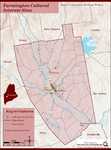Keywords: cultural
Item 27950
Alameda Hall Interior, Bath, ca. 1889
Contributed by: Maine Maritime Museum Date: circa 1889 Location: Bath Media: Photographic print
Item 96
Portland Schools Americanization Classes, 1926
Contributed by: Maine Historical Society/MaineToday Media Date: 1926 Location: Portland Media: Glass Negative
Exhibit
Holding up the Sky: Wabanaki people, culture, history, and art
Learn about Native diplomacy and obligation by exploring 13,000 years of Wabanaki residence in Maine through 17th century treaties, historic items, and contemporary artworks—from ash baskets to high fashion. Wabanaki voices contextualize present-day relevance and repercussions of 400 years of shared histories between Wabanakis and settlers to their region.
Exhibit
Creation and other cultural tales are important to framing a culture's beliefs and values -- and passing those on. The Wabanaki -- Maliseet, Micmac, Passamaquoddy and Penobscot -- Indians of Maine and Nova Scotia tell stories of a cultural hero/creator, a giant who lived among them and who promised to return.
Site Page
Western Maine Cultural Alliance
View collections, facts, and contact information for this Contributing Partner.
Site Page
Farmington: Franklin County's Shiretown - Culture
"Culture Click the icon to see locations of cultural sites in Farmington (past and present) X Artifact research and descriptions by Jean…"
Story
Dr. Norman Beaupré: Preserving his Franco-American culture
by Biddeford Cultural & Heritage Center
Journey growing up as a Franco-American in Biddeford to his career as a professor and author.
Story
We Gonna Be Alright and Say It Loud
by Ryan Adams
Creating artwork during a period of social and cultural awakening
Lesson Plan
Maine's Acadian Community: "Evangeline," Le Grand Dérangement, and Cultural Survival
Grade Level: 9-12
Content Area: English Language Arts, Social Studies
This lesson plan will introduce students to the history of the forced expulsion of thousands of people from Acadia, the Romantic look back at the tragedy in Henry Wadsworth Longfellow's famous epic poem Evangeline and the heroine's adoption as an Acadian cultural figure, and Maine's Acadian community today, along with their relations with Acadian New Brunswick and Nova Scotia residents and others in the Acadian Diaspora. Students will read and discuss primary documents, compare and contrast Le Grand Dérangement to other forced expulsions in Maine history and discuss the significance of cultural survival amidst hardships brought on by treaties, wars, and legislation.
Lesson Plan
What Remains: Learning about Maine Populations through Burial Customs
Grade Level: 6-8
Content Area: English Language Arts, Social Studies, Visual & Performing Arts
This lesson plan will give students an overview of how burial sites and gravestone material culture can assist historians and archaeologists in discovering information about people and migration over time. Students will learn how new scholarship can help to dispel harmful archaeological myths, look into the roles of religion and ethnicity in early Maine and New England immigrant and colonial settlements, and discover how to track changes in population and social values from the 1600s to early 1900s based on gravestone iconography and epitaphs.
















